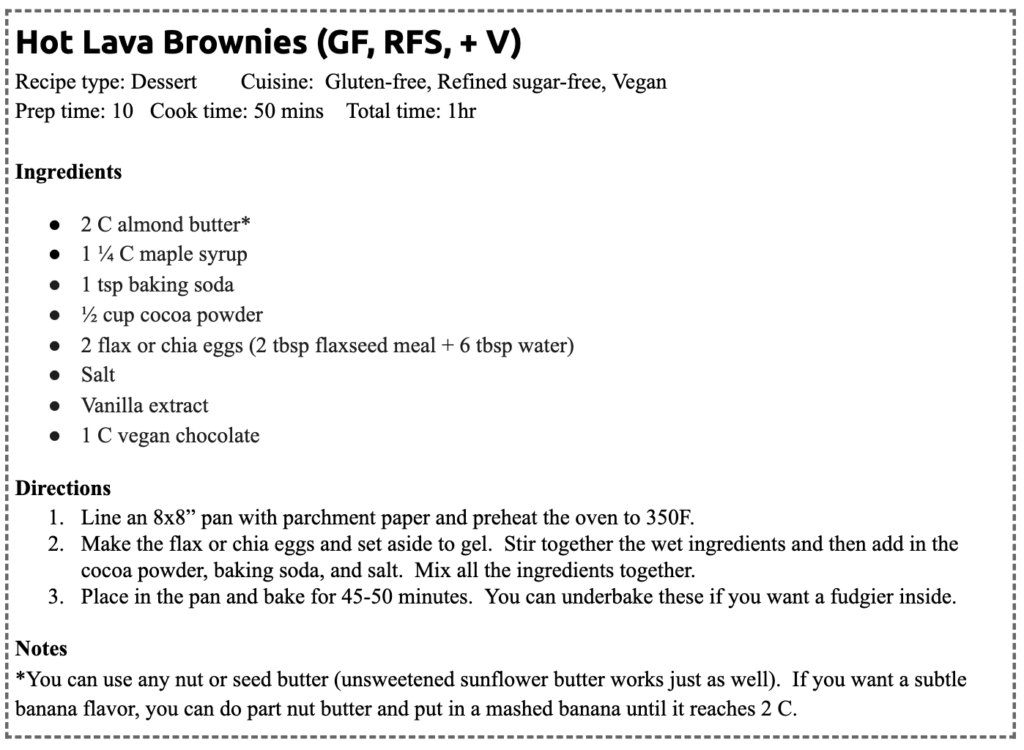Lately, chocolate has taken center stage in my dessert game. In this post, I’ll first share my newest love: a flourless, oil-free lava brownie recipe. And secondly, I’ll share the importance of getting your chocolate from sustainable sources.
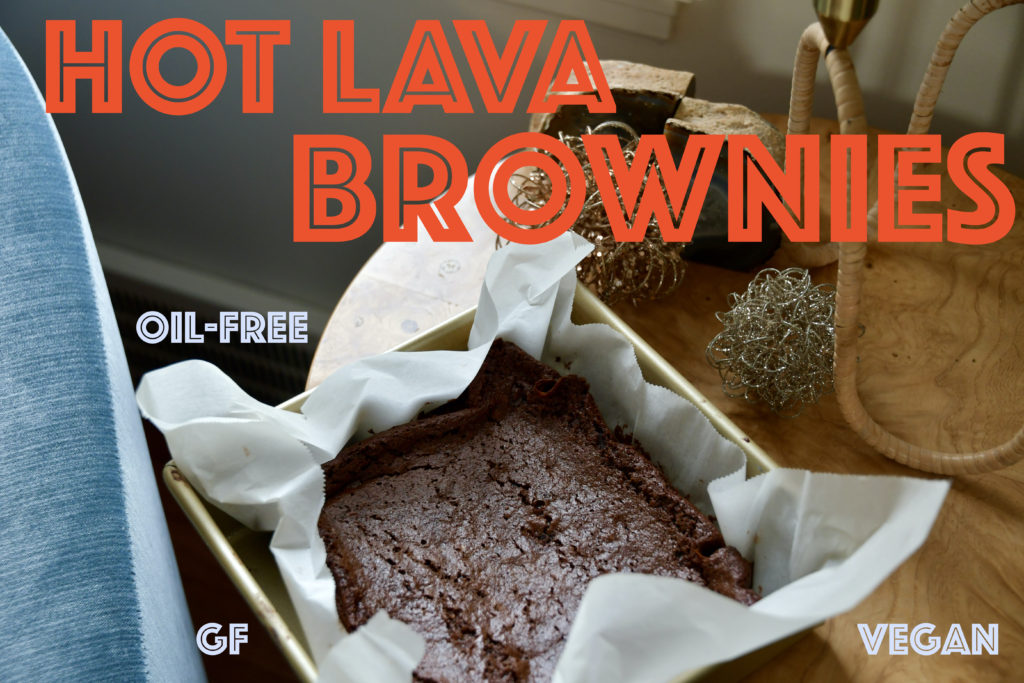
First up, the lava brownies.
Why call them lava brownies? For starters, these brownies may as well be descendants of the great, oozing lava cakes. Also, in considering the general symbolism of 2020, lava represents both anger and frustration (I’m thinking of the famous Obi-Wan Kenobi vs. Anakin Skywalker scene here), but also in its fluidity, it reminds us of these points:
- Am I going with the flow?
- How can I more easily move through resistance?
After all, wasn’t that what this year was all about?
This recipe is also about using what most people have in their pantry: nut/seed butter, liquid sweetener, cocoa powder, baking soda, flaxseeds or chia seeds, chocolate chips, and vanilla extract.
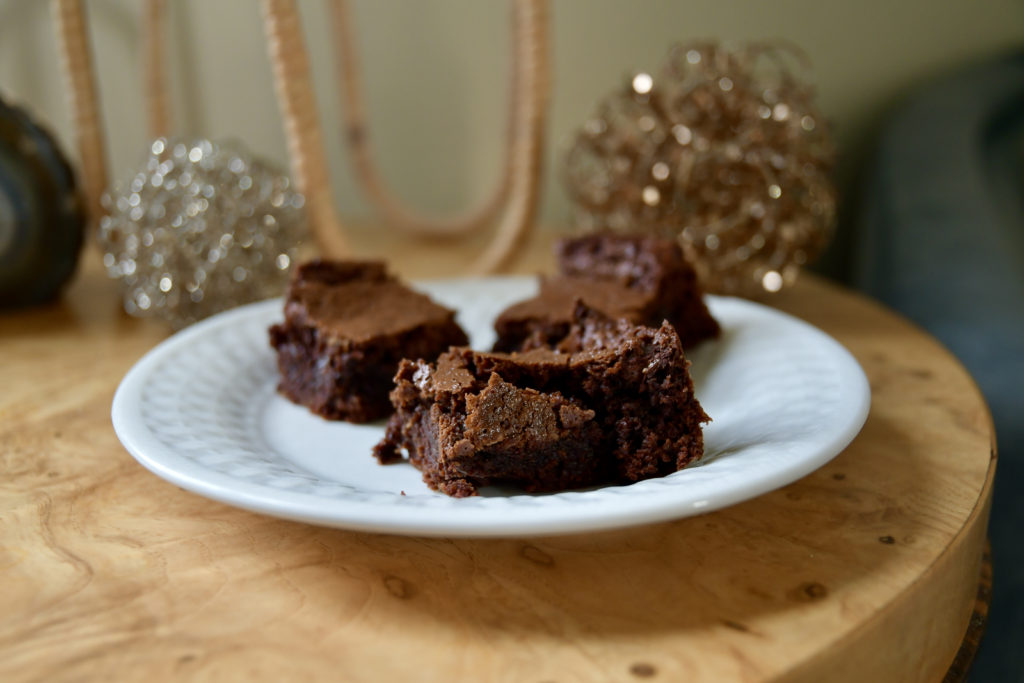
As some of you may know, I love recipes that you can easily alter so it tastes different with each time you make it. Therefore, you can play around with the nut/seed butter you use.
Want a (healthier, sustainably-sourced) Ferrero-Rocher feel? Do a hazelnut butter and coat your brownies with a chocolate frosting and chopped roasted hazelnuts. Nut allergy? Simply replace it with some tahini or sunflower butter. How about some spice? Add some cayenne or chopped spicy chocolate.
There’s no way around it. These are decadent. Melodious, wicked, and smooth, they are undoubtedly a dark chocolate lover’s dream.
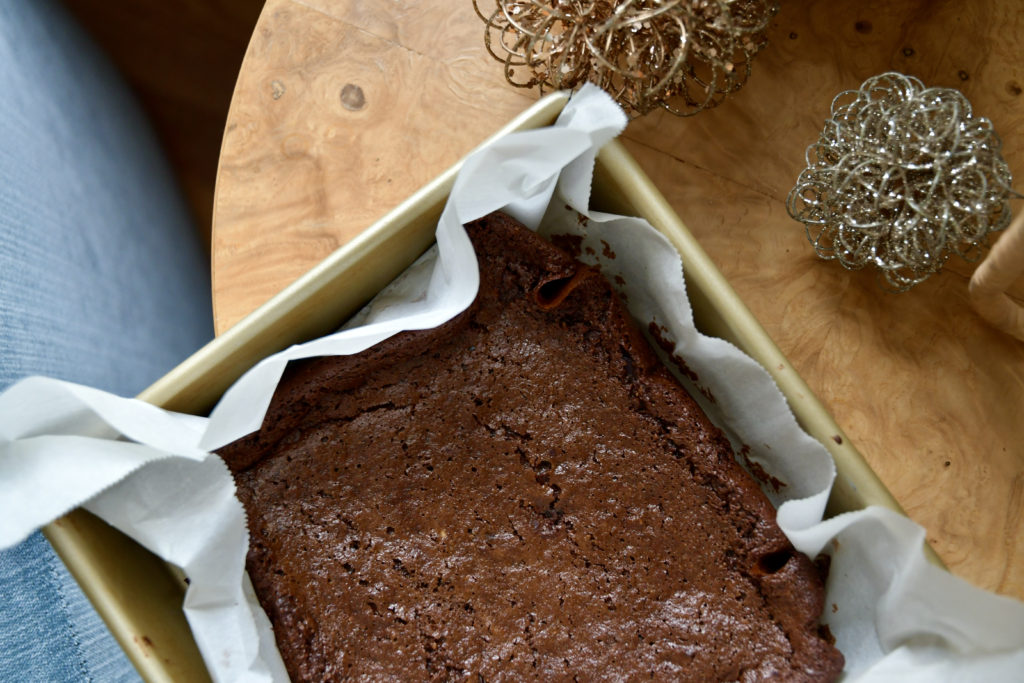
Why is buying sustainably-sourced chocolate important?
Early this year, I watched Netflix’s Rotten series. One of the episodes, “Bitter Chocolate” (S2E5), opened my eyes to the grossly corrupt supply chain in which most of our chocolate is produced. Most chocolate farms are in West Africa, where workers are underpaid at $200/year, with some transportation workers (called pisteurs) risking their lives. Most Ivorian cocoa farmers have never even tried chocolate. Not only is most chocolate harmful to those at the bottom of the supply chain, it is generally harmful to the environment through illegal deforestation. Settlers invade parks and burn down existing trees, planting cocoa plants which take years to mature. I was also surprised to learn that there are only three main chocolate traders – Barry Callebaut, Cargill, and Olam – that provide their products to more commonly known brands like Hersheys. I found these infographics on a report done by Mighty Earth.
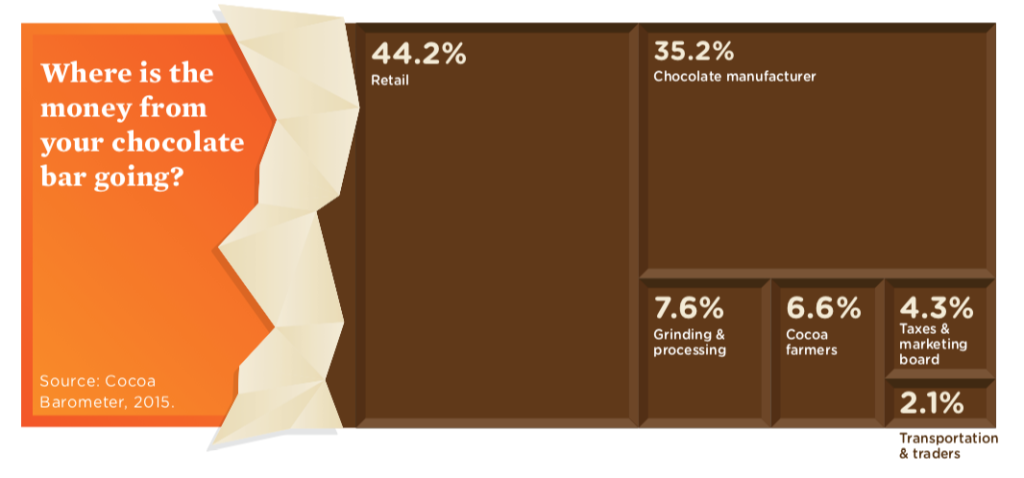
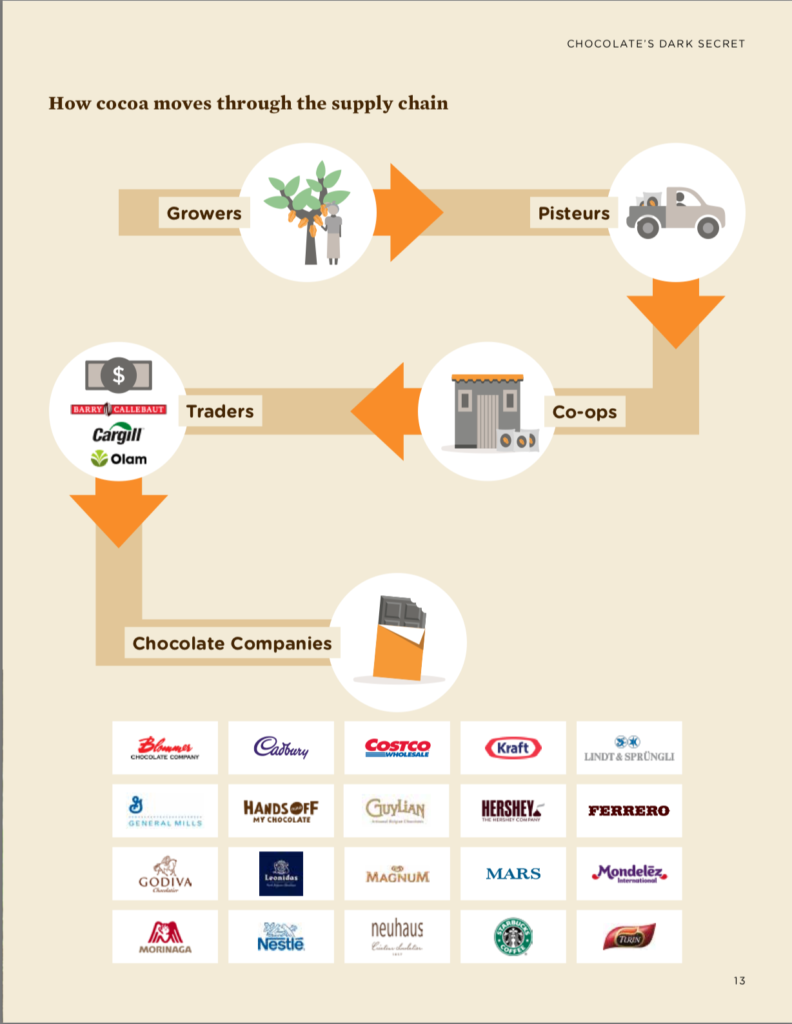
I’ve always been a fan of chocolate, but never completely understood the process of making it. One of my favorite Boston memories is when I went to visit Taza‘s chocolate factory with my family. Taza is a pioneer in ethical cacao sourcing, maintaining direct relationships with their Oaxacan cacao farmers and paying a premium for the Fair Trade price for cacao. Their stone-ground chocolate is minimally processed, letting the true chocolate flavor take center-stage. When I make these brownies, I love to include chopped pieces of their coffee disk, or if I want some spice, their chipotle chili variation. Other delicious flavors are their raspberry crunch, salted almond, vanilla … I could go on and on … They’ve just launched chocolate chunk made with coconut sugar that I’m eager to try.
Another one of my favorite brands is Endangered Species. With each chocolate bar, Endangered Species Chocolate donates 10% of net profits to partner organizations that support species conservation, habitat preservation and humanitarian efforts. This chocolate is a hit with everyone. My personal favorite is their Strong + Velvety Dark Chocolate, which has hints of fruit and spice. My roommate also loved this brand, stocking a couple Forest Mint + Dark Chocolate bars in the mini fridge. It was one of the first things we connected over!
If you’re looking for other fair trade chocolates, I like consulting The Good Trade. It’s also a great website with many guides to sustainable products.
As for cocoa powder, I’ve been using Wild Food Co.’s for a couple years and have loved it. This brand is avid about doing the business the right way. They even have an extensive guide on cocoa, including its history, the various processes, and origins.
I hope you enjoy this recipe and have learned a bit of where chocolate comes from! You may want to check what you have in your pantry 🙂
